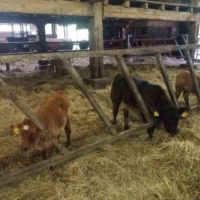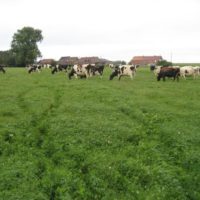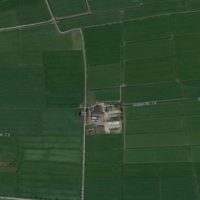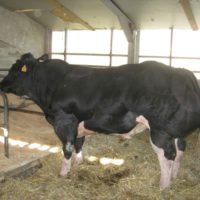A breeder with a flexible mind to adapt to climate change
Practice abstract
Description
Near Mont Saint Michel, a couple of farmers raise dairy cows to produce organic milk. After the crisis of 2009, they have decided to develop grazing on their farm and even aim for a maximum-grazing system. For this purpose, they are learning about grazing management from experimental farms and are often participating in discussion groups. They put in place various techniques including rotational grazing. They have planted chicory in their grasslands, more drought resistant plant and are using a grassland species mixture, which facilitates the work organization. They are also using a topping technique consisting in mowing the grass before letting the cows graze on mown grass because in this way the cows eat also the outgrown grass. They are enlarging the grazing area thanks to parcel exchanges and acquiring extra parcels. They are crossing their cows according to the characteristics of each breed (Holstein x Jersey x Scandinavian Red) with the objective of having lighter animals. They now have 50 acres/cow instead of 35 and, in September, were in a situation that even if the grass would stop growing, there would still be enough grass available to feed the cows for another 90 days. They plan to reduce the number of animals per ha to adapt to the drying environment, to extend the life of their grasslands, to reduce tillage and replant trees and hedgerows in and around plots. Despite the economic and climatic context, the farmers dare to test solutions to reduce their system weaknesses and are seeking out opportunities that allow them to improve even further.
Additional information
| Farming system | organic farming |
|---|---|
| Domains of innovation | animal type (breed), farm system, forage mixture, grazing management system |
| Main types of animal | dairy cattle |
| Country | France |
| Product type | Practice abstract |
| Language | English |




